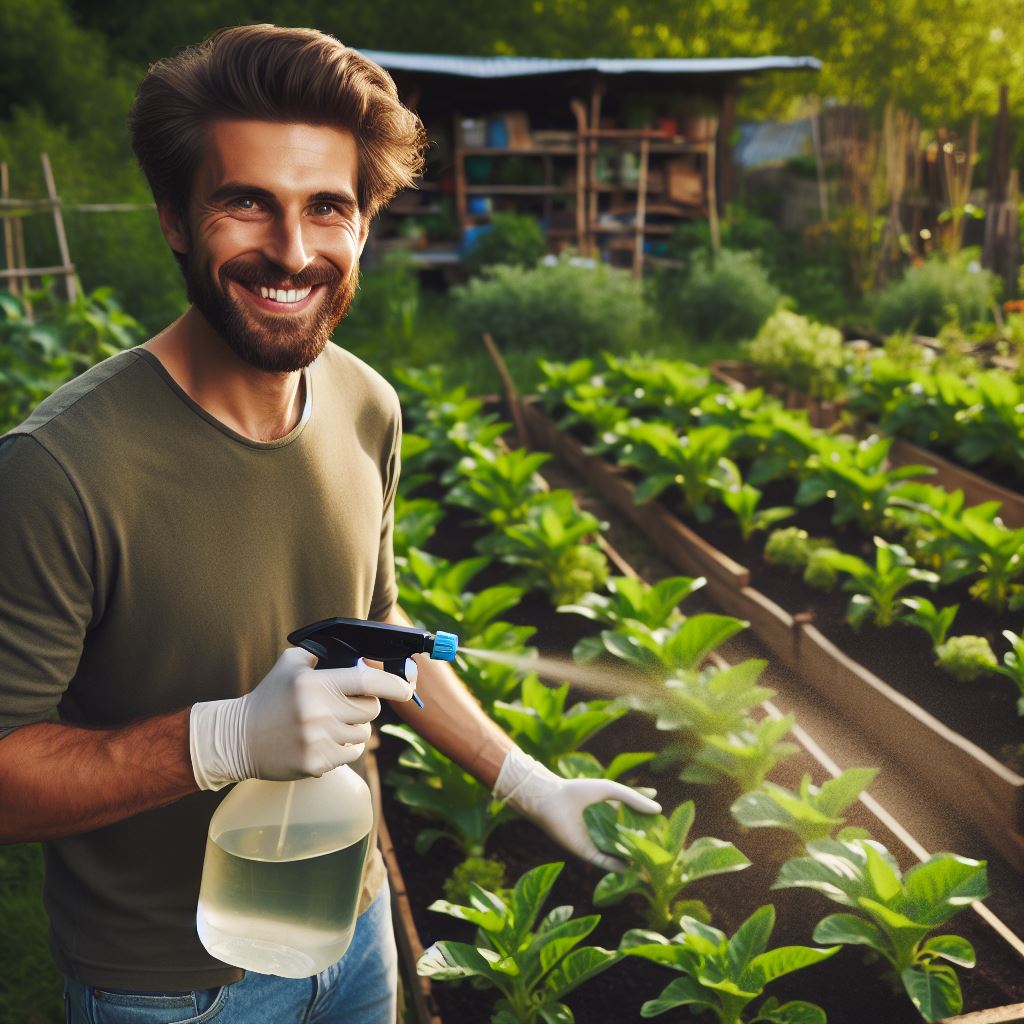Introduction
Combining aquaculture and hydroponics, aquaponics emerges as a sustainable method of food production that integrates fish types and plant choices.
It involves raising fish and growing plants together in a symbiotic environment.
The choice of fish types and plant species is crucial to the success of an aquaponics system.
Fish provide nutrients to the plants through their waste, while plants filter water for the fish.
The type of fish selected should be suitable for the system’s water temperature and pH levels.
Popular fish choices for aquaponics include tilapia, trout, and catfish.
These fish are hardy, fast-growing, and tolerate a wide range of water conditions.
In addition to fish, selecting the right plants is essential for a balanced aquaponics system.
Leafy greens like lettuce, spinach, and kale are popular choices due to their fast growth and nutrient uptake.
Herbs like basil, mint, and oregano also thrive in aquaponics systems and provide flavor to meals.
The selection of plants should consider their nutrient requirements and ability to tolerate waterlogged conditions.
By carefully choosing fish types and plant varieties, aquaponic enthusiasts can create a harmonious ecosystem that produces both fish and crops efficiently.
This sustainable method of farming has the potential to contribute to food security and reduce environmental impact.
Fish Types for Aquaponics
Importance of choosing the right fish
Choosing the appropriate fish is crucial for the success of an aquaponics system.
The right fish will contribute to a balanced ecosystem and ensure optimum plant growth.
Common fish types used in aquaponics
Tilapia
Tilapia is one of the most popular fish species used in aquaponics due to its resilience and fast growth rate.
It can tolerate a wide range of water conditions and has a high feed conversion efficiency.
Trout
Trout is another suitable fish choice for aquaponics, especially in cooler climates.
They require colder water temperatures and provide a high-quality source of protein for both the plants and the grower.
Catfish
Catfish is a good option for warmer climates.
They are hardy and can tolerate fluctuating temperature and water quality.
Catfish also have a low feed conversion rate, making them cost-effective.
Carp
Carp is a common fish species used in aquaponics, particularly in Asia.
They adapt well to different environmental conditions and have a high tolerance for poor water quality.
Factors to consider when selecting fish types
To choose the right fish types for your aquaponics system, consider the following factors:
Climate considerations
The climate in your specific location will influence the fish species you can successfully raise.
Cold-water fish like trout are better suited for cooler climates, while tilapia thrives in warmer areas.
Water temperature requirements
Different fish species have specific temperature requirements.
Ensure that the water temperature in your aquaponics system matches the ideal range for the chosen fish.
This will maximize their growth and overall health.
Feeding habits and nutritional needs
Understanding the feeding habits and nutritional needs of the fish is crucial for maintaining a balanced ecosystem.
Some fish species require specific diets or supplements to meet their nutritional requirements.
Considering these factors will help you make an informed decision when selecting fish types for your aquaponics system.
Each fish species has its own advantages and considerations, so choose wisely.
In fact, choosing the right fish types is essential for a successful aquaponics system.
Tilapia, trout, catfish, and carp are commonly used due to their adaptability and growth characteristics.
Factors like climate, water temperature, and feeding habits should be carefully considered when making your selection.
By selecting the appropriate fish, you can create a harmonious ecosystem that benefits both the fish and the plants in your aquaponics setup.
Read: Soil Health: Tips for Small-Scale Farmers
Plant Choices for Aquaponics
Role of plants in aquaponics ecosystem
In an aquaponics system, plants play a crucial role in maintaining water quality and providing a habitat for beneficial bacteria.
Plants absorb excess nutrients generated by fish waste, helping to prevent water pollution and maintain a healthy ecosystem.
Transform Your Agribusiness
Unlock your farm's potential with expert advice tailored to your needs. Get actionable steps that drive real results.
Get StartedTheir roots provide a surface area for beneficial bacteria to grow, which helps in the conversion of harmful ammonia into nitrites and nitrates.
Furthermore, plants release oxygen into the water, benefiting the fish by ensuring adequate oxygen levels for their respiration.
Best types of plants for aquaponics
When choosing plants for an aquaponics system, it is important to consider their compatibility with the aquatic environment.
- Leafy greens (lettuce, spinach, kale): Leafy greens are popular choices as they have high nutrient uptake rates and grow well in aquatic conditions.
- Herbs (basil, mint, parsley): Herbs not only add flavor to your meals but also thrive in an aquaponics setup.
- Fruit-bearing plants (tomatoes, cucumbers, peppers): Fruit-bearing plants can be successfully grown in aquaponics, yielding fresh produce of various colors and flavors.
- Root vegetables (carrots, radishes, beets): Root vegetables can be grown effectively in an aquaponics system, providing a diverse range of harvestable crops.
Factors to consider when selecting plant types
- pH and nutrient requirements: Each species of plant has specific pH and nutrient requirements. It is important to choose plants that thrive within the water parameters of the aquaponics system.
- Growth rates and space constraints: Consider the growth rates of different plants, as some may require more space or have invasive root systems that could overpower the system.
- Temperature and lighting needs: Ensure that the selected plants can tolerate the temperature and lighting conditions of the particular aquaponics setup.
Provide the necessary lighting, especially if the natural light is insufficient or inconsistent.
By carefully considering these factors, you can create an aquaponics system that effectively supports the growth of your chosen plant species while maintaining a balanced ecosystem.
As you explore different plant options for your aquaponics system, don’t be afraid to experiment and find what works best for your unique setup.
Remember that the plants and fish in your aquaponics ecosystem have a symbiotic relationship, supporting each other’s growth and well-being.
Read: Hydroponics: Future of Urban Farming?

The Relationship Between Fish Types and Plant Choices
Importance of Balancing the Fish-to-Plant Ratio
Aquaponics, the combination of aquaculture and hydroponics, relies on a delicate balance between fish and plants.
Keeping the fish-to-plant ratio in check is crucial for a thriving system.
To maintain a healthy environment, it is essential to ensure that the fish population does not overwhelm the plant’s nutrient needs.
Overstocking fish can lead to an excess of waste, which may result in nutrient imbalances and negatively impact plant growth.
On the other hand, if the fish population is too low compared to the number of plants, there may not be enough nutrients for the plants to thrive.
It is crucial to strike the right balance to maximize the benefits of this symbiotic relationship.
Nutrient Cycling and Symbiotic Relationship in Aquaponics
Aquaponics creates a symbiotic relationship between fish and plants, where they rely on each other to thrive.
Fish produce waste rich in nutrients, which becomes the main source of food for the plants.
In this closed-loop system, the fish waste is broken down by beneficial bacteria into nitrates, providing the essential nutrients needed for plant growth.
The plants then take up these nutrients, filtering the water and ensuring a healthy environment for the fish.
This nutrient cycling process is essential for maintaining the overall system’s balance.
It minimizes the need for external fertilizers, making aquaponics a sustainable and eco-friendly method of cultivation.
Selecting Plants Suitable for Specific Fish Types
Different types of fish have varying nutrient requirements, temperature preferences, and waste production rates.
It is important to choose plant species that can thrive in the specific conditions provided by the fish.
For example, tilapia and catfish produce high amounts of waste and prefer warmer water temperatures.
Plants like lettuce, herbs, and fruiting crops, such as tomatoes or peppers, are well-suited to these conditions.
On the other hand, trout and salmon prefer colder water temperatures and have lower waste production.
Leafy greens like kale, Swiss chard, and watercress, along with herbs such as mint or basil, are excellent choices for these fish species.
By selecting plants that can thrive in the specific environment provided by the fish, you can maximize both the fish and plant yields in your aquaponics system.
The relationship between fish types and plant choices plays a vital role in the success of an aquaponics system.
Balancing the fish-to-plant ratio is crucial for maintaining a healthy environment and optimal nutrient cycling.
By selecting plants suitable for the specific needs of the fish, you can create a symbiotic relationship where each element benefits from the other.
This allows for sustainable production of fish and high-quality plants without the use of external fertilizers.
Remember, aquaponics is a dynamic and evolving practice, and it may require experimentation and adjustment to find the perfect fish-to-plant ratio for your specific setup.
Happy aquaponic farming!
Read: Pest Control: Natural Solutions for Small Farms
Tips for Successful Aquaponics System
Proper monitoring of water quality
- Regularly test the water for pH levels, ammonia, nitrate, and oxygen levels.
- Make necessary adjustments to maintain the optimal conditions for both fish and plants.
- Invest in a reliable water testing kit to accurately monitor the water quality.
- Keep a record of the test results and identify any patterns or fluctuations.
Ensuring compatibility between fish types and plant choices
- Research and choose fish species that thrive in the same environmental conditions as the desired plants.
- Consider factors such as water temperature, pH levels, and nutrient requirements.
- Avoid pairing aggressive or large fish that may harm the plants or smaller fish.
- Select plant varieties that can efficiently absorb the waste produced by the fish.
Regular maintenance and care for both fish and plants
- Monitor fish behavior and health regularly to spot any signs of illness or stress.
- Feed the fish with appropriate amounts of high-quality fish food to support their growth.
- Remove any uneaten food to prevent water contamination and overfeeding.
- Prune and trim the plants as needed to promote healthy growth and prevent overcrowding.
- Inspect the system for any signs of leaks, clogs, or malfunctions and address them promptly.
- Clean the filtration system regularly to maintain efficient nutrient cycling.
By following these tips, you can ensure the success of your aquaponics system, providing a sustainable and symbiotic environment for both fish and plants.
Read: Top 10 Plants for Beginner Urban Gardeners
Showcase Your Farming Business
Publish your professional farming services profile on our blog for a one-time fee of $200 and reach a dedicated audience of farmers and agribusiness owners.
Publish Your ProfileSee Related Content: Hydroponic Basics for Urban Farmers
Conclusion
Aquaponics is a fascinating method of sustainable farming that combines fish cultivation and plant growth in a symbiotic ecosystem.
Throughout this blog section, we have explored the importance of fish types and plant choices in aquaponics.
Recap the significance of fish types and plant choices
Choosing the right fish type is crucial for the success of an aquaponic system.
fish species have different environmental requirements, growth rates, and waste production.
By selecting suitable fish species, the system can maintain a balanced nutrient cycle for both fish and plants.
Additionally, certain fish types, such as tilapia or catfish, are popular choices for commercial aquaponics due to their fast growth and market demand.
Plant choices are equally essential in aquaponics.
Different plant species have varying nutrient requirements and adaptability to water conditions.
Leafy greens like lettuce and herbs are commonly grown in aquaponics due to their high nutrient uptake and fast growth.
However, other plants like tomatoes or cucumbers can also be cultivated successfully in aquaponic systems with proper nutrient management and support structures.
Encourage further research and experimentation in aquaponics
While aquaponics has gained popularity in recent years, there is still much to discover and explore in this field.
Continued research and experimentation can lead to advancements in fish selection, plant varieties, system designs, and overall efficiency.
Scientists, farmers, and enthusiasts are encouraged to share their findings and ideas to promote sustainable aquaponic practices.
In summary, the careful consideration of fish types and plant choices plays a vital role in achieving a thriving aquaponic system.
By understanding the needs of both aquatic and plant life, we can create a sustainable and productive ecosystem.
With further research and experimentation, aquaponics has the potential to revolutionize modern agriculture and contribute to a more sustainable future.




